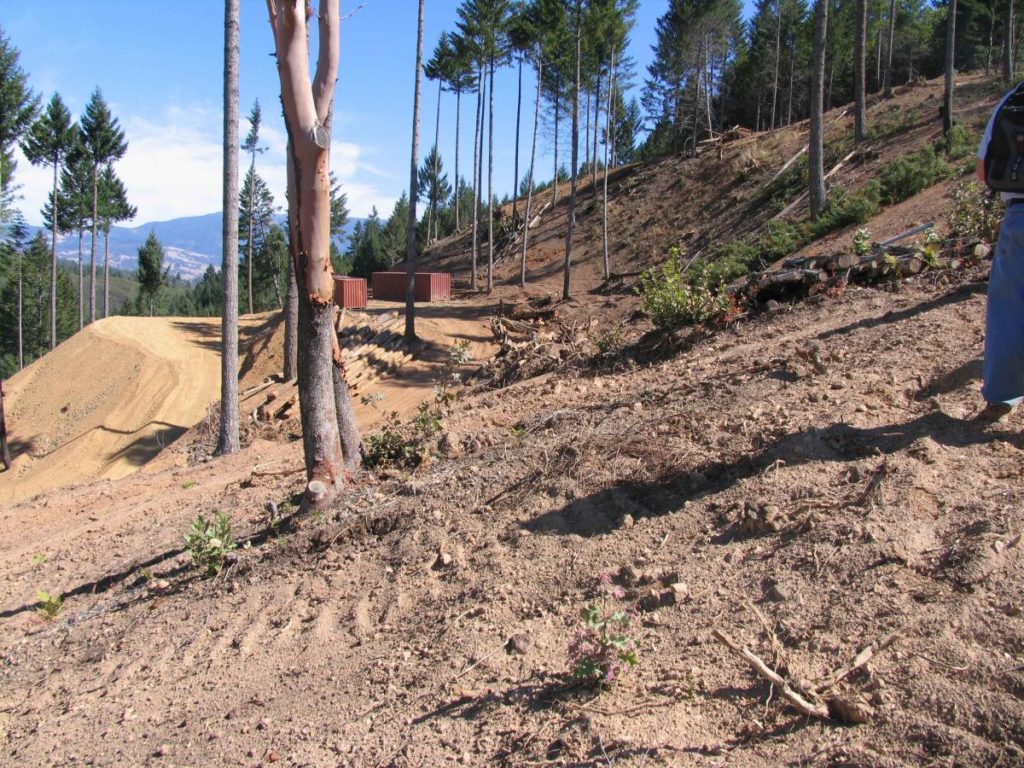Join CWEA’s sessions on cannabis cultivation and wastewater pretreatment standards at the P3S19 Conference, Feb 11-13, and AC19, April 9-12 in Palm Springs. There will be a cannabis cultivation tour at AC19.

This illegal cannabis cultivation farm was cleared in 2007 but damage is still visible years later (source: North Coast Regional Board)
Press release from the State Water Board…
The State Water Resources Control Board (State Water Board) fine-tuned its pioneering cannabis cultivation policy Tuesday to clarify implementation issues while ensuring growers continue to be environmentally responsible in an industry that has rapidly expanded with urban and rural grow sites throughout much of California.
The updates, focusing on four key issues – onstream reservoirs, tribal buffers, requirements for indoor cultivation sites, and winterization requirements — were incorporated into the policy to increase and simplify compliance. The policy revisions were finalized after months of feedback from stakeholders.
“The updates improve the rules that commercial cannabis growers must follow, while adhering to sound environment protection practices intended to keep waterways and lands from being contaminated, and water resources protected when there is more demand than supply,” said Eileen Sobeck, executive director at the State Water Boards.
The initial policy was approved in October of 2017 in response to Proposition 215, the Compassionate Use Act, establishing the medical cannabis industry, and Proposition 64, which legalized recreational marijuana use for adults 21 and older.
During the public comment period for the updated policy, individual and grower coalitions pointed out that certain requirements in the initial policy, especially those dealing with how grow sites were maintained or prepared during the largely dormant winter months, did not reflect the new realities of an industry that has pushed well beyond its origins along the rugged and rainy North Coast into more established farmlands of the Central Valley and Central Coast.
With the changes in place after a vote of the State Water Board at today’s meeting, the main tenets of the Cannabis Cultivation Policy remain unchanged – to protect water flows and water quality in the state’s rivers and streams. To achieve that, the policy uses a two-pronged approach – statewide requirements detailed in a water quality permit known as the Cannabis General Order, and cannabis-related water rights referred to as Cannabis Small Irrigation Use Registrations (SIUR).
Since voters approved Prop. 64 in November of 2016, the State Water Board anticipated the rapid growth of the recreational cannabis market and made good on its commitment to protect California’s waters from cannabis-related discharges, establish safeguards for riparian areas and wetlands, and protect stream flows.
Here is a summary of the four key updates:
Since 2013, the State Water Board’s Office of Enforcement has worked with the North Coast and Central Valley Regional Water Boards, along with the California Department of Fish and Wildlife, to address the potentially harmful environmental impacts of cannabis cultivation. With the revised and updated Cannabis Policy, the State Water Board will continue its enforcement efforts while engaging with new cultivators to understand the regulations and help them navigate the permitting process and become compliant.
To read more about the Water Boards rules for commercial cannabis cultivation in California, visit the cannabis cultivation website and follow us on Facebook (Water Boards Cultivation Programs).
###